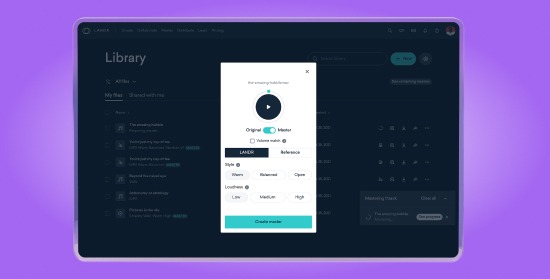How to Choose the Right Mastering Style for Your Mix

Mastering is more than just the finishing touches on your track.
A good master should enrich the unique qualities and sonic signature of your mix—and take it even further.
To find your sound, you need to match the style of your mix to the style of your master.

It’s an important part of staying in the driver’s seat of your own musical vision.
That’s why the new Synapse mastering engine includes mastering styles, to give you the tools you need to create your own unique sound and preserve your signature production techniques during mastering.
But with so many different approaches to mastering, how do you choose the style that works for your mixing decisions and your tracks?
In this article I’ll show you how to choose the perfect mastering approach for your mix.

What are mastering styles?
Mastering styles are different aesthetic approaches to processing a mix during the mastering phase.
Mastering has been around in some form since the earliest recorded music.
But today’s mixes are more diverse than ever. A playlist might put a roots country track carefully mixed for a warm vintage tone directly alongside a searing full-frequency EDM blast.
That means mastering needs to be adaptable to all kinds of different mixing philosophies. How does your style fit in? And how do you preserve it during mastering?
Mastering styles
Mastering Styles are the new way for you to guide the LANDR AI to your best master.
To help you get to know them, LANDR lead audio engineer Al Isler explains the mood and characteristics of each different style and what they do best:
Warm
“Warm has a softer, more intimate high end, with a rich, full low-mid bass. It can add a sense of weight to tracks, or fill out a thin or harsh sounding mix.”
Balanced
“Balanced strikes a good balance between a full, but not overly weighty, low-end and a clear, articulate, yet controlled high end. A good default option, especially when you’re not sure which one to pick.”
Open
“Open gives you a targeted mid-range scoop that gives a sense of openness and liveliness to a mix. Very clear and articulate, but with a solid, punchy low-end. Good for faster tempo tracks and a generally modern sound.”

How to choose the right mastering style for your mix
Now that you have an idea of the different styles, here’s how to choose the right approach for your master.
1. Ask yourself what you’re looking for in a master
Think about the kind of master that would most benefit your track and how it’s mixed.
Are you looking for an overall sonic signature that’s smooth and warm? Or do you need maximum punch and air?
Have an idea of what you want before you get too far with comparisons. That way you’ll be able to keep your vision in mind as you listen critically.

2. Identify the overall character of your mix
What goes in is just as important as what comes out. To choose your style you’ll have to know what kind of mix you’re sending to the mastering AI.
Take some time to identify the characteristics of your mix with mix referencing. Bear in mind that the material you compare against makes a difference.
If you’re referencing a 70’s rock track you’ll have to be aware of the mastering style that was in vogue then. That could influence your best choice of LANDR mastering style.
As you compare, listen for things like:
- EQ contour
- Overall dynamics
- Level and frequency range of each element
Compare mixes against one another to highlight what makes each one different. Use the information you get from these comparisons to make informed decisions about your master.
For example, maybe your mix already contains a lot of high end. In that case you might not need the top end extension of the Modern style.
Or maybe your lows are more gentle and could benefit from some reinforcement—in that case Modern could be your best choice.
3. Audition different styles
With a sense of your mix and a vision of what you want for your master, audition the different mastering styles to see how they interact with your track.
Make sure the style you choose emphasizes the right parts of your production. Think about how the loudness, compression and EQ of your track are affected by the mastering process.
Use volume matching to match the level of your mastered track with the original and hear the effect of the mastering process to make the best decision.
Style guide
Your process is all about your own personal style—mastering shouldn’t be the exception.
Choose the right mastering style and put your personal touch on your music during every step of your workflow.
LANDR mastering styles let you guide the advanced AI that creates your masters.
Use them to take the final step in your production process into your own hands. That’s what Synapse is all about.
